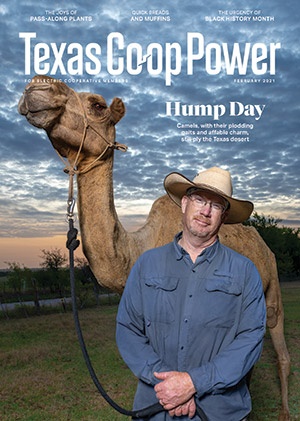Even though details of some events in Texas history are always debated, the origin of the state’s name not so much. Native Americans called the Caddos have a word, Taysha, that means friend, which the Spanish translated into tejas as the name for the region and the people.
The Caddo Nation once stretched from Northeast Texas to Missouri. Roughly 25 miles west of Nacogdoches, the Pineywoods open onto a grassy field marked by three earthen mounds. Twelve hundred years earlier, I might have encountered a Caddo community of up to 150 grass houses and 900 people. Now a visit to Caddo Mounds State Historic Site there allows a glimpse into this ancient and sophisticated community. A tornado destroyed the site’s permanent visitor center in 2019, but a temporary headquarters offers tours.
A tour guide brought the entire site to life. The first mound is the burial mound, where Caddo leaders were interred with supplies for the six-day journey into the afterlife, where they became stars—in the celestial sense. The second mound is a ceremonial, low platform that served originally as a stage. Across Texas Highway 21 is the temple mound, which was the largest and site of religious ceremonies and worship. I felt like I was looking at the Texas version of the pyramids of Giza. These mounds were the ceremonial center of the region.
Archaeologists have excavated parts of the site and learned details about the farming and trading the Caddos practiced centuries ago. The Caddos followed sophisticated social, religious and political systems that helped them thrive for 500 years. The site inspires present-day Caddo people to bring ancient practices back to life and preserve the culture that gave Texas its name.


